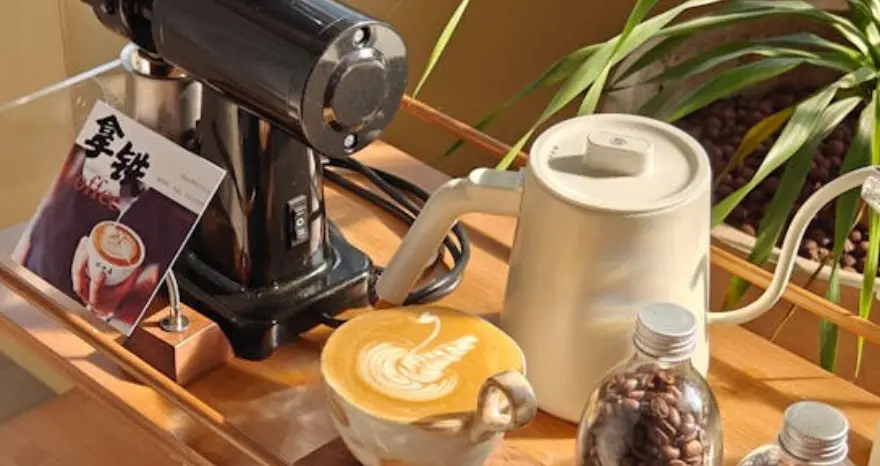Grinding coffee is a crucial step in the journey from bean to cup. Even the highest-quality coffee beans can result in a disappointing brew if ground incorrectly. The right grind size ensures proper extraction, which directly impacts the taste, aroma, and strength of your coffee. In this guide, we’ll explore how to grind your coffee the right way for every type of brewing method.
Why Grind Size Matters
Grind size refers to the coarseness or fineness of the coffee particles. It affects how quickly water passes through the grounds and extracts flavor. A grind that’s too fine can result in over-extraction—making the coffee bitter—while a grind that’s too coarse can lead to under-extraction, making it weak and sour.
Each brewing method requires a specific grind size to bring out the best characteristics of the coffee.
The Types of Coffee Grinds
Before diving into brewing methods, it’s important to understand the basic categories of grind size:
- Extra Coarse: Similar to peppercorns or sea salt.
- Coarse: Like kosher salt.
- Medium-Coarse: Gritty, like rough sand.
- Medium: Consistency of regular sand.
- Medium-Fine: Smoother than sand but not powdery.
- Fine: Like table salt or sugar.
- Extra Fine: Almost powdery, close to flour.
Now, let’s match these grind sizes to the appropriate brewing methods.
French Press – Coarse Grind
The French Press is known for its full-bodied and rich coffee. Since it uses a metal mesh filter, a coarse grind is necessary to prevent sediment from passing through and to allow for a long steeping process (about 4 minutes). Using a grind that’s too fine will result in a muddy cup and make the plunger harder to press.
Tip: Use a burr grinder to achieve an even coarse grind.
Cold Brew – Extra Coarse Grind
Cold brew is brewed slowly using cold water over 12 to 24 hours. This method requires an extra coarse grind to prevent over-extraction and bitterness. Fine grinds would clog the filter and produce an unpleasant, sludgy texture.
Tip: Because of the long brew time, don’t worry about getting every particle perfectly sized—just avoid using anything fine or medium.
Pour Over – Medium to Medium-Fine Grind
For pour-over methods like the Hario V60 or Chemex, the grind size can vary slightly based on the specific equipment, but generally, a medium to medium-fine grind works best. This allows for a balanced extraction, as water flows steadily through the coffee bed.
Tip: If your brew tastes sour or watery, the grind is too coarse. If it tastes bitter, it’s too fine.
Drip Coffee Maker – Medium Grind
Drip coffee makers, common in many homes, work best with a medium grind. This grind allows water to flow through at a moderate rate, giving enough contact time to extract the coffee’s flavor without overdoing it.
Tip: Use freshly ground beans and adjust your grind if your coffee tastes too weak or too strong.
AeroPress – Medium-Fine to Fine Grind
The AeroPress is a versatile tool that works with several grind sizes depending on how long you brew. For a short brew time (under a minute), a fine grind is better. For a longer steep, go with medium-fine.
Tip: Experiment with grind sizes to find your perfect balance—AeroPress is very forgiving and great for testing.
Espresso – Fine Grind
Espresso machines require a fine grind to create the pressure needed for extraction. The grind should be similar to table salt and uniform in size. If it’s too coarse, your espresso will be watery. If it’s too fine, it can clog the machine or produce a bitter shot.
Tip: Use a high-quality burr grinder for precision, and be prepared to dial in your grind daily depending on humidity and bean freshness.
Moka Pot – Fine to Medium-Fine Grind
Often called a stovetop espresso maker, the Moka pot uses steam pressure to brew coffee. A grind slightly coarser than espresso—medium-fine—is ideal. Too fine, and you risk clogging the filter and creating too much pressure.
Tip: Keep the grind consistent and avoid tamping the coffee as you would with espresso.
Turkish Coffee – Extra Fine Grind
Turkish coffee is unique in that the grounds remain in the cup. This method requires an extra fine grind—almost like flour—so that the grounds can settle at the bottom after brewing. The texture is crucial to achieving the traditional mouthfeel.
Tip: Not all grinders can achieve this fine of a grind; a specialized Turkish grinder may be needed.
Blade vs. Burr Grinders
Using the right grinder is just as important as choosing the right grind size. Blade grinders chop beans unevenly, leading to inconsistent extraction. Burr grinders, on the other hand, crush beans uniformly and allow for adjustable grind settings.
Tip: Invest in a burr grinder, even an entry-level one, for better control and more consistent results.
Final Thoughts: Match Your Grind to Your Method
Getting your coffee grind right isn’t just for professionals or coffee snobs. It’s a simple adjustment that can dramatically improve your brew at home. Whether you prefer a strong espresso or a mellow cold brew, using the correct grind size ensures you’re getting the most flavor from your beans.
Quick Reference Guide:
| Brewing Method | Recommended Grind Size |
|---|---|
| French Press | Coarse |
| Cold Brew | Extra Coarse |
| Pour Over | Medium to Medium-Fine |
| Drip Coffee Maker | Medium |
| AeroPress | Medium-Fine to Fine |
| Espresso | Fine |
| Moka Pot | Medium-Fine |
| Turkish Coffee | Extra Fine |
Grinding your coffee right is like tuning an instrument—once you find the perfect balance, every cup will sing.

